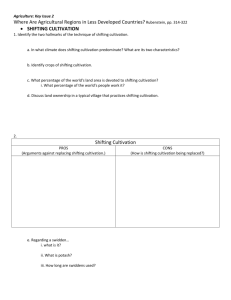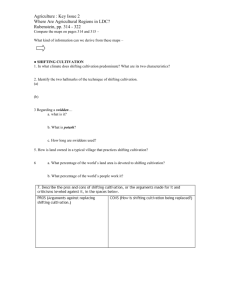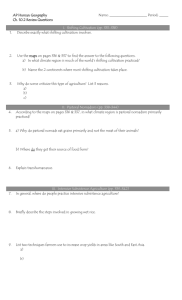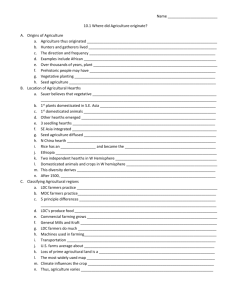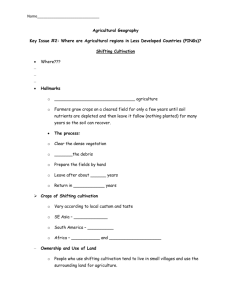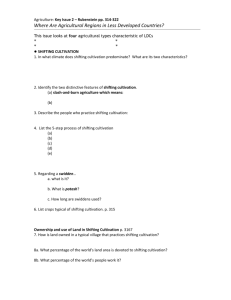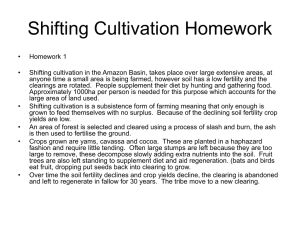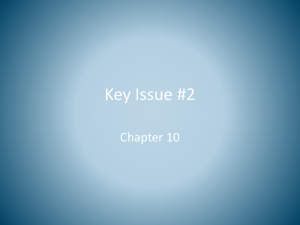MYP HG-CH.10 Agriculture Name Hour ______ Key Issue #2
advertisement
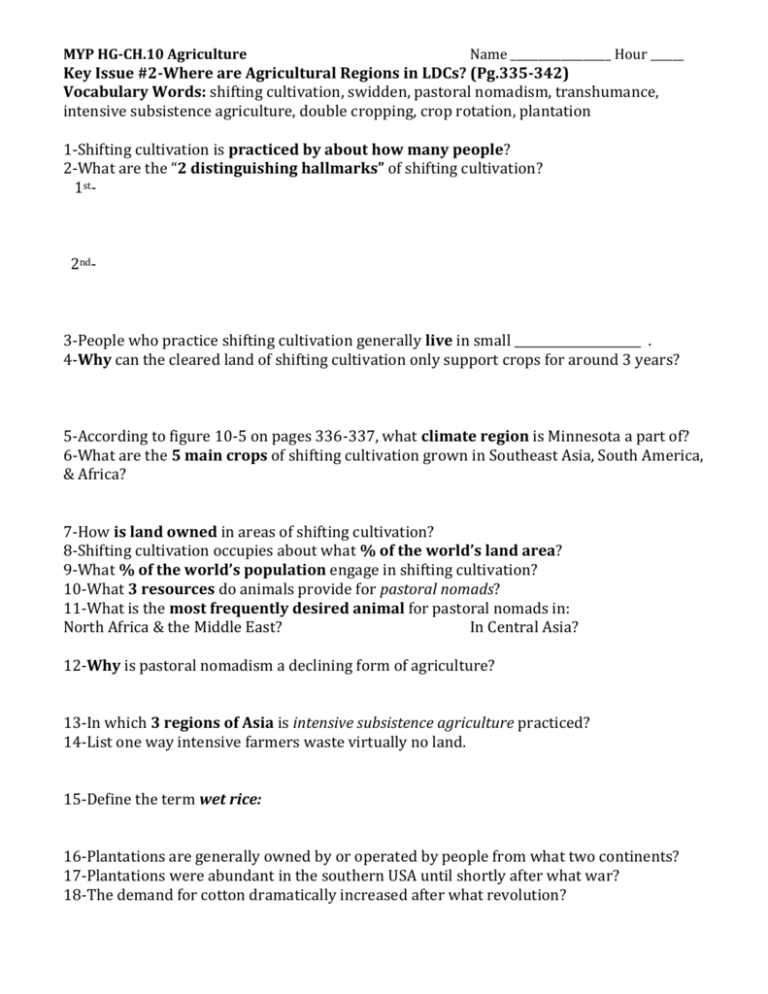
MYP HG-CH.10 Agriculture Name __________________ Hour ______ Key Issue #2-Where are Agricultural Regions in LDCs? (Pg.335-342) Vocabulary Words: shifting cultivation, swidden, pastoral nomadism, transhumance, intensive subsistence agriculture, double cropping, crop rotation, plantation 1-Shifting cultivation is practiced by about how many people? 2-What are the “2 distinguishing hallmarks” of shifting cultivation? 1st- 2nd- 3-People who practice shifting cultivation generally live in small _____________________ . 4-Why can the cleared land of shifting cultivation only support crops for around 3 years? 5-According to figure 10-5 on pages 336-337, what climate region is Minnesota a part of? 6-What are the 5 main crops of shifting cultivation grown in Southeast Asia, South America, & Africa? 7-How is land owned in areas of shifting cultivation? 8-Shifting cultivation occupies about what % of the world’s land area? 9-What % of the world’s population engage in shifting cultivation? 10-What 3 resources do animals provide for pastoral nomads? 11-What is the most frequently desired animal for pastoral nomads in: North Africa & the Middle East? In Central Asia? 12-Why is pastoral nomadism a declining form of agriculture? 13-In which 3 regions of Asia is intensive subsistence agriculture practiced? 14-List one way intensive farmers waste virtually no land. 15-Define the term wet rice: 16-Plantations are generally owned by or operated by people from what two continents? 17-Plantations were abundant in the southern USA until shortly after what war? 18-The demand for cotton dramatically increased after what revolution? MYP HG-CH.10 Agriculture Name __________________ Hour ______ Key Issue #2-Where are Agricultural Regions in LDCs? (Pg.335-342) Vocabulary Words: shifting cultivation, swidden, pastoral nomadism, transhumance, intensive subsistence agriculture, double cropping, crop rotation, plantation 1-Shifting cultivation is practiced by about how many people? 2-What are the “2 distinguishing hallmarks” of shifting cultivation? 1st- 2nd- 3-People who practice shifting cultivation generally live in small _____________________ . 4-Why can the cleared land of shifting cultivation only support crops for around 3 years? 5-According to figure 10-5 on pages 336-337, what climate region is Minnesota a part of? 6-What are the 5 main crops of shifting cultivation grown in Southeast Asia, South America, & Africa? 7-How is land owned in areas of shifting cultivation? 8-Shifting cultivation occupies about what % of the world’s land area? 9-What % of the world’s population engage in shifting cultivation? 10-What 3 resources do animals provide for pastoral nomads? 11-What is the most frequently desired animal for pastoral nomads in: North Africa & the Middle East? In Central Asia? 12-Why is pastoral nomadism a declining form of agriculture? 13-In which 3 regions of Asia is intensive subsistence agriculture practiced? 14-List one way intensive farmers waste virtually no land. 15-Define the term wet rice: 16-Plantations are generally owned by or operated by people from what two continents? 17-Plantations were abundant in the southern USA until shortly after what war? 18-The demand for cotton dramatically increased after what revolution?

